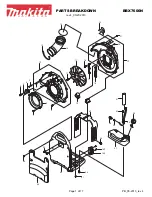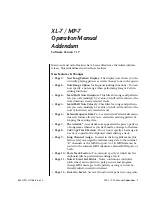
Chapter 3 Automotive Test
63
Figure 3-44 BMW 5 Series N20 P Secondary ignition signal
3.5
Networks
3.5.1
CAN High & CAN Low
CAN bus is a communication system, which is widely used in modern vehicles. A car may have 2 to 3 CAN bus
networks, both high-speed and low-speed. The general high-speed transmission rate is 500k, which is usually used
for power transmission. The low-speed rate is 250k, which is usually used for meter transmission. Each CAN bus
network can connect multiple types of multiple devices, replacing the traditional multi-wire harness cable,
significantly reducing weight and increasing reliability.
The CAN bus has 2 wires, CAN high and CAN low, and the signals are in a differential relationship. The CAN bus
is divided into idle and transmission states. When idle, CAN high and CAN low are both 2.5V. When transmitting
signals, the high level of CAN high is 3.5V, and the low level is 2.5V; the high level of CAN low is 2.5 V, the low
level is 1.5V. Use a BNC to banana cable, one end is connected to channel 1 of the oscilloscope, the other end of
the black plug is grounded, and the red connector is pierced into the CAN high wire of the plug with a needle; use
a BNC to banana cable, one end is connected to channel 2 of the oscilloscope, and the other end is grounded, and
the red connector is pierced into the CAN low wire of the plug with a needle tip.
The specific CAN high and CAN low can be found in the technical manual of the vehicle.
Use ATO oscilloscope to test the CAN bus, the specific operation is shown in Figure 3-45:
Summary of Contents for ATO1000 Series
Page 1: ......
Page 2: ...Version Info Version Date Remarks V1 0 2020 06 ...
Page 52: ...Chapter 3 Automotive Test 49 Figure 3 30 Electronic fuel pump test ...
Page 71: ...68 Figure 3 49 K line test ...
Page 79: ...76 Figure 3 57 Mazda 6 Cylinder internal pressure measurement ...
















































